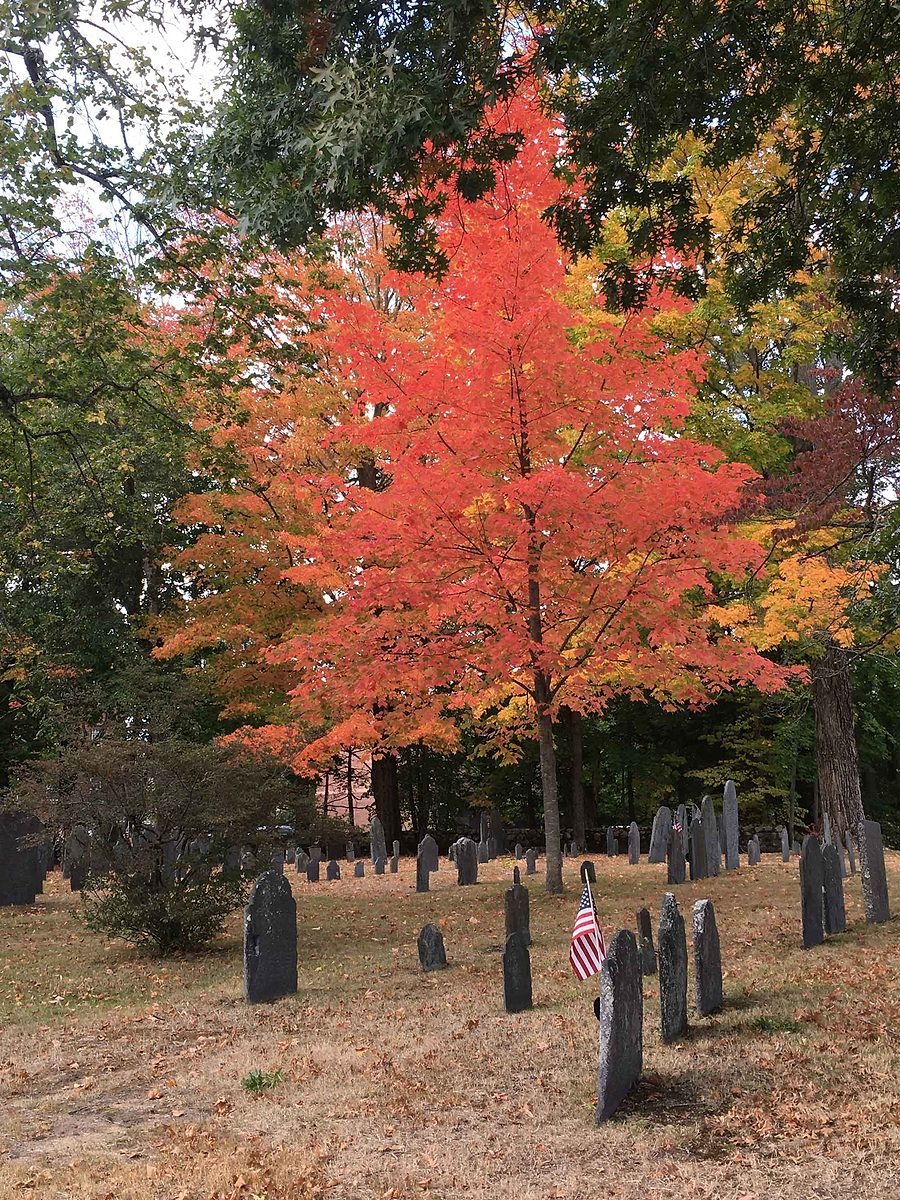The expression “dead men tell no tales” may not quite ring true. The men, women, and even small children buried in Concord’s three burying grounds have much to teach us about the town’s early colonial history, its revolutionary chapter, and even our literary legacy. Take a stroll, enjoy the stunning fall foliage, and take a trip back in time to learn more about Concord’s British and American history.
Old Hill Burying Ground
Concord’s earliest burial site is located on a hillside overlooking the town center and includes some of the town’s oldest graves. The oldest marked grave here belongs to Joseph Merriam, who died April 20, 1677, at the age of 47.
History buffs will recognize the names of Col. James Barrett, John Beaton, Capt. David Brown, Reuben Brown, Col. John Buttrick, Hugh Cargill, Dr. John Cuming, Rev. William Emerson, Joseph Meriam, the Honorable James Minot, Peter Wright, and the Honorable Ephriam Wood, among many others. The grave of John Jack documents the life of a man born in Africa, enslaved in Concord, and who died a free man (he purchased his freedom from the widow of the man who had enslaved him). Daniel Bliss, a Tory who felt it was hypocritical of colonists to cry for freedom from England while they themselves enslaved others, wrote an eloquent epitaph for John Jack which was later published in a London paper.
Music enthusiasts will appreciate the legacy of Miss Abigail Dudley. A monetary gift she bequeathed to the Town of Concord back in 1812 endures to this very day and is used to support choir music at the First Parish Meetinghouse. Many more fascinating pieces of history can be discovered by roaming this old burying ground.
South Burying Ground
Also called Main Street Burying Ground, this is Concord’s second-oldest cemetery. According to town legend, it was considered bad luck to transport a corpse across a body of flowing water – and the Mill Brook runs through the center of town. And so, a second burying ground was established near what is today’s Keyes Road. Here you will find many ancestors of families who are still quite prominent in Concord today. There are 13 graves decorated with markers identifying them as American Revolutionary War veterans.
Sleepy Hollow Cemetery
Sleepy Hollow is Concord’s largest, and best known, cemetery. Spanning 119 acres, Sleepy Hollow includes the graves of Bronson Alcott, Louisa May Alcott, Ralph Waldo Emerson, Daniel Chester French, Nathaniel Hawthorne, Sophia Peabody Hawthorne, Henry David Thoreau, and many others. The cemetery is also home to the famous sculpture “Mourning Victory” by Daniel Chester French. The haunting statue watches over the Melvin memorial, burial place of Asa, John, and Samuel Melvin – Concord brothers killed during the Civil War.
———————————————————
Please do not rub images from the fragile gravestones in Concord cemeteries. We know that scholars and history enthusiasts alike may want to learn more about Concord’s fascinating people and their grave markers – but rubbing images of the markers contributes to the deterioration of these important parts of our cultural heritage. To help you discover more, and to preserve our history, Concord Public Works undertook a Grave Marker Preservation Program in 1999. A photographic record and a database of every grave marker in the South Burying Ground and the Old Hill Burying Ground can be found at the Concord Free Public Library. Learn more at concordlibrary.org/special-collections/gravemarker-data. You can also learn more about the fascinating stories behind the graves found at Sleepy Hollow Cemetery by visiting friendsofsleepyhollow.org


